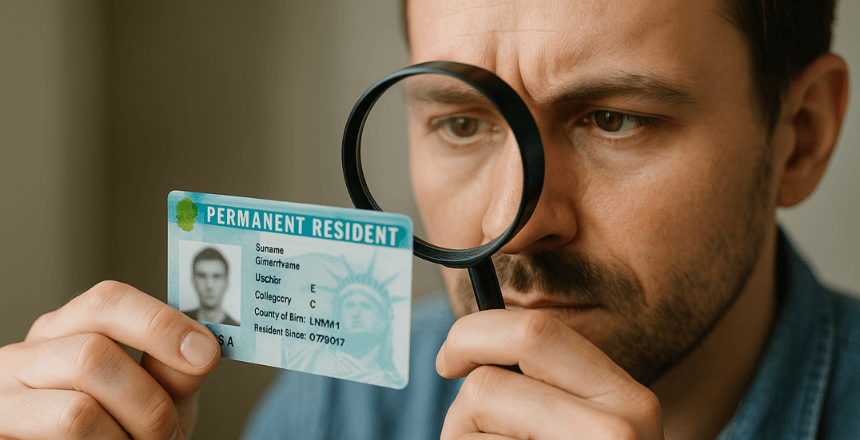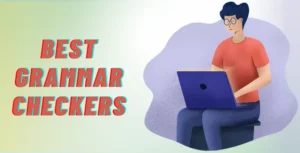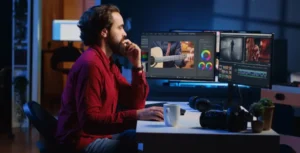One of my friend works at a bar downtown. He almost got fired because he let someone in with a fake ID. The license looked perfect to him, but apparently it was so obviously fake that his manager couldn’t believe he missed it.
That got me curious. How hard can it be to spot a fake ID?
Turns out… it’s way more complicated than I thought.
I spent weeks researching this stuff. Read through industry reports, watched training videos, studied real vs fake comparisons until my eyes hurt.
What I found was pretty shocking. And honestly? Kind of scary.
The Numbers That Blew My Mind
Okay, so I’m looking at the latest data, and it’s wild.
One company alone flagged over 600,000 fake IDs in 2024. Just ONE company!
And the detection rates? They jumped from 8.8% to 12.5% in 2025. That means roughly 1 in 8 IDs being checked are fake now.
This isn’t just college kids anymore. Earlier this year, Quebec police busted a professional operation making high-quality fakes. We’re talking laser engravers, hologram equipment, the works.
No wonder my friend was fooled.
What Everyone Gets Wrong
Most people think spotting fake IDs is about obvious stuff. Blurry photos, wrong fonts, cheap materials.
That’s not how it works anymore.
The fakes I researched look incredibly real. Same materials, similar holograms, professional printing. Some even use stolen templates from actual DMV systems.
But here’s what I learned from talking to experts: they always mess up somewhere. Always. You just need to know where to look.
The “Feel Test” That Actually Works
This was the first thing every security person told me about.
Real government IDs are expensive to make. They use special substrates (Teslin, polycarbonate layers) that feel substantial. Heavy. Professional.
What to check:
- Weight (fakes often feel too light or strangely heavy)
- Flexibility (real IDs bend slightly but spring back)
- Edge quality (should be perfectly smooth)
- Surface texture (no bumps or rough spots)
One bouncer I talked to said he catches about half his fakes just by touch. Before even looking at them closely.
Holograms: The Expensive Problem
This is where counterfeiters usually cut corners.
Real holograms are crazy expensive and hard to make. So most fakes either skip them or use cheap substitutes.
Here’s what I learned to check:
- Tilt the ID slowly under light (phone flashlight works)
- Real holograms shift smoothly with multiple image layers
- Look for sharp, clear details (not cloudy or pixelated)
- Check if they match your state’s specific patterns
Some fakes just use stickers. Literally stickers. You can feel the edges if you run your finger over them.
Typography: The Detail Nobody Talks About
This was eye-opening for me.
Government agencies are obsessive about fonts. Same typeface, exact spacing, consistent sizing across everything. It’s like they have font OCD.
Counterfeiters? Not so much.
Red flags I learned to spot:
- Multiple fonts on one ID
- Letters that don’t align properly
- Weird spacing between words
- Numbers that look wrong compared to text
I started comparing questionable IDs to legitimate ones I found online. The differences jump out once you know what to look for.
UV Light: The $20 Game Changer
This blew my mind.
Most states hide security features that only show up under UV light. State seals, hidden text, special patterns. Stuff you’d never see otherwise.
I bought a small UV flashlight on Amazon for like $20. Started testing it on real IDs first to see what should be there.
Fakes either have no UV features at all, or they’re completely wrong for that state.
One security expert told me this single test catches more sophisticated fakes than anything else. The counterfeiters either don’t know about UV features or can’t replicate them properly.
However, some fake id vendors online claim they produce ids with these details.
Reading Behavior (The Psychology Part)
I talked to many bouncers about this. They all said the same thing: people with fake IDs act differently.
Can’t help it, apparently.
Common behaviors:
- Covering parts of the ID with fingers
- Acting overly friendly or aggressive
- Can’t maintain eye contact
- Friends acting nervous
- Rushing the interaction
Simple test questions that work:
- “What’s your birthday?” (should be instant)
- “What’s your zip code?”
- “How do you spell your last name?”
Any hesitation on basic personal info is suspicious.
State-Specific Features (The Homework Part)
Every state does things differently. Different holograms, UV patterns, layouts, everything.
I started with my Arizona, then studied neighboring ones and places where college students come from.
What I focused on:
- Hologram patterns and placement
- UV security features
- Font choices and sizing
- Color schemes
- Layout standards
You don’t need to know all 50 states. Just the ones you’re likely to encounter.
Technology That Actually Helps
Basic tools I recommend:
- UV flashlight (you can find under $20 on Amazon)
- Small magnifying glass ($10 for checking fine details)
- Your phone’s regular flashlight
- Free barcode scanner apps
The UV light is definitely the best investment. Catches fakes that look perfect to the naked eye.
For businesses, professional scanners run $500-2000. But honestly, learning the manual techniques first is more important.
The Legal Stuff You Need to Know
This was important to research.
What you can do:
- Refuse service or entry
- Ask questions about the ID
- Use reasonable verification methods
What you can’t do:
- Confiscate IDs (unless you’re law enforcement)
- Detain people
- Make accusations without evidence
Many states protect businesses that use “reasonable methods” for age verification (source). Following proper procedures protects you legally.
Mistakes That Get People in Trouble
From talking to people who’ve dealt with this:
Don’t do this:
- Rush through the process during busy times
- Check some IDs carefully but not others
- Ignore gut feelings because you’re tired
- Rely completely on technology
- Stop learning about new counterfeiting techniques
Consistency is key. Check every ID the same way.
A Simple System That Works
Based on everything I learned, here’s a practical approach:
30-second check:
- Quick gut feeling (3 seconds): anything feel off?
- Physical inspection (10 seconds): weight, texture, edges
- Visual check (10 seconds): holograms, fonts, layout
- Info verification (5 seconds): dates, formatting consistency
- Behavior read (2 seconds): how’s the person acting?
Fast enough for busy environments, thorough enough to catch sophisticated fakes.
Real Examples I Found
- Case 1: Perfect-looking ID with legitimate holograms. Turned out the holograms were peeled off damaged real IDs and applied to fakes. The giveaway was mismatched font sizes in the personal info section.
- Case 2: High-quality fake that passed visual inspection completely. Failed instantly under UV light no hidden security features at all where there should have been state seals.
- Case 3: Real ID that was stolen and being used by someone else. The person couldn’t answer basic questions about their own supposed address and birthday.
The Advanced Fakes (The Scary Ones)
The most sophisticated counterfeits I researched use:
- Legitimate materials stolen from ID production
- Real holograms from damaged authentic IDs
- Professional printing equipment
- Correct fonts and layouts
How to catch these:
- Check wear patterns (does wear match claimed age?)
- Use magnification for tiny details
- Compare against database records when possible
- Pay extra attention to behavioral cues
Even professional fakes mess up small details. Wrong state abbreviation formats. Incorrect microprinting. UV features slightly off.
Training Others (If You Manage Staff)
Based on what successful businesses do:
Effective training:
- Hands-on practice with known examples
- Regular update sessions on new techniques
- Clear consequences for missing obvious fakes
- Rewards for staff who catch counterfeits correctly
What doesn’t work:
- One-time training session and that’s it
- Just showing obviously bad examples
- No ongoing support or education
- Punishing people for asking questions
What’s Coming Next… ?
AI is being used both to create better fakes and to detect them. It’s getting wild.
Future ID detection methods will be:
- Real-time facial recognition matching
- AI analysis of microscopic security features
- Blockchain-based ID verification
- Advanced training simulations
But human skills will still matter. Technology helps, but you need to understand what you’re looking at.
My Takeaways
After all this research, here’s what surprised me most:
The counterfeiters are way more sophisticated than I expected. But they’re not perfect. They make predictable mistakes if you know what to look for.
The technology is helpful, but human observation skills are still crucial. A $20 UV light and some training beats expensive scanners operated by people who don’t know what they’re doing.
One missed fake ID can shut down a business or get someone fired. The stakes are real.
The fake ID industry keeps evolving. Just this year we’ve seen major busts of professional operations. It’s not just college kids with home printers anymore.
But with proper knowledge and techniques, regular people can learn to spot even sophisticated counterfeits.
Final Thoughts
I started this research to help my friend. Ended up learning way more than I expected about a whole underground industry I never knew existed.
If you work somewhere that checks IDs, this stuff could save your job. If you own a business, it could save your license.
The techniques I’ve outlined work. They’re based on real security expert knowledge and proven in real-world situations.
Stay curious, keep learning, and trust your instincts. When something feels off about an ID, investigate further.
Better safe than sorry.









